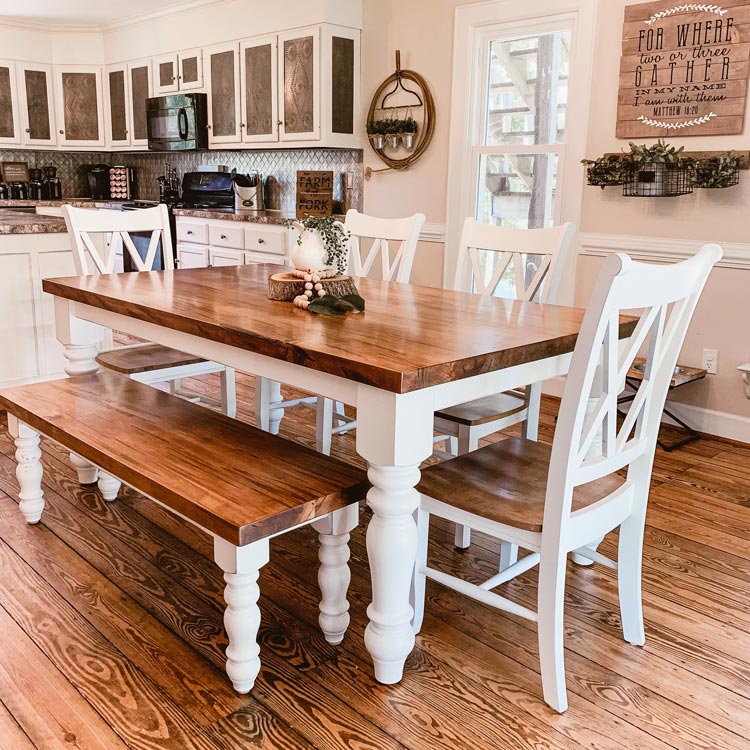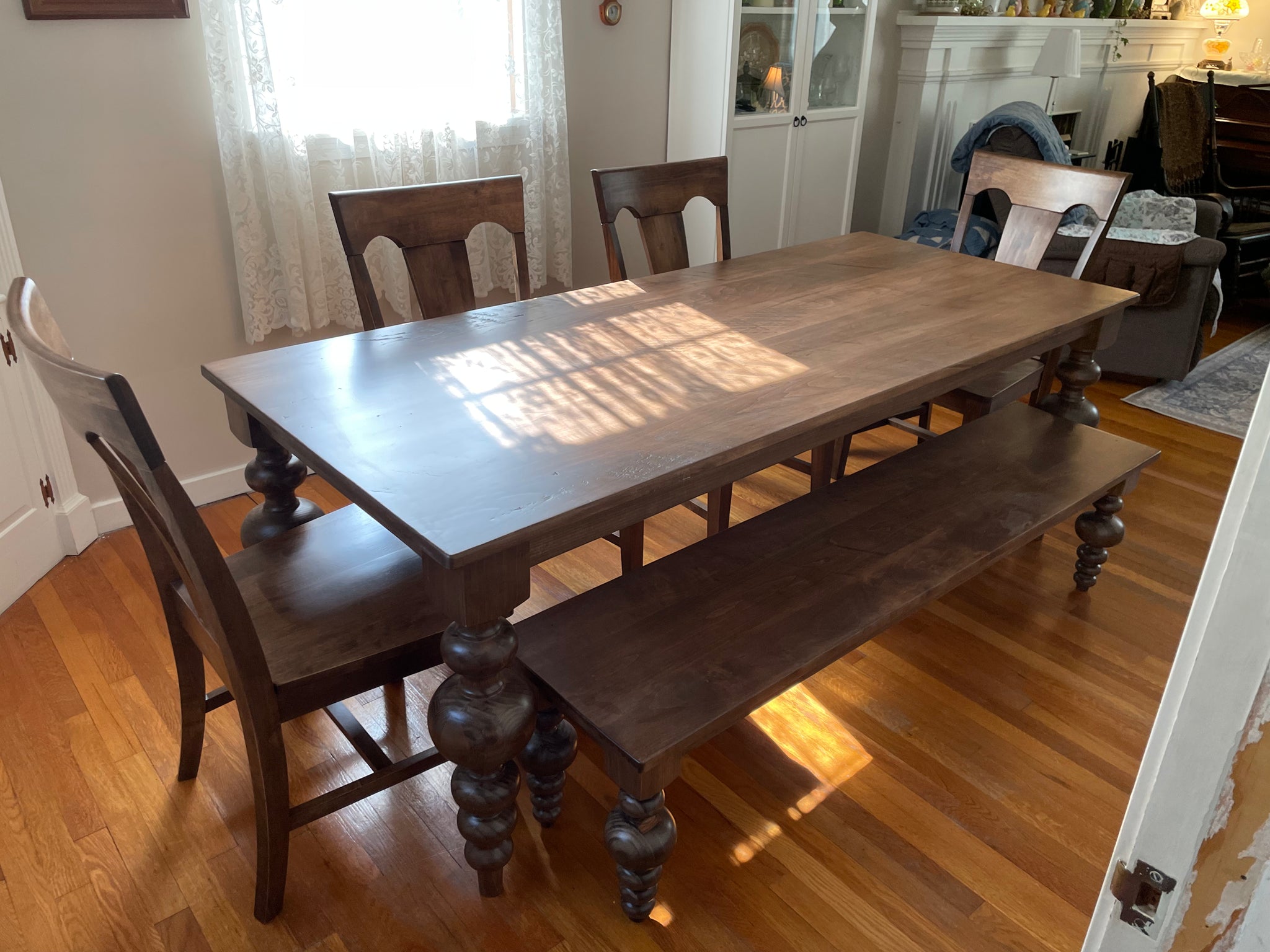How the Right Dining Room Table Legs Can Complete Your Dining Room Look
How the Right Dining Room Table Legs Can Complete Your Dining Room Look
Blog Article
From Conventional to Modern: Locate the Suitable Dining Space Table Legs for Your Design
The option of dining-room table legs plays a critical function in specifying the total personality of your room, linking the space between standard workmanship and contemporary visual appeals. While timeless designs such as cabriole and transformed legs stimulate a sense of timeless elegance, modern designs like hairpin and geometric alternatives provide an opportunity for striking aesthetic passion. Assessing the appropriate balance in between these designs calls for a nuanced understanding of your existing decor and individual preference. As you consider these aspects, the inquiry remains: just how can you flawlessly incorporate these diverse leg designs to develop a harmonious dining experience?
Recognizing Table Leg Styles
The range of eating area table leg styles can significantly influence both the visual appeals and functionality of the room. Each leg style contributes special useful attributes and visual elements, catering to varied design choices and usage demands. Recognizing these designs is critical for selecting the appropriate table that aligns with your overall interior layout vision.
For instance, tapered legs offer a tidy, timeless appearance that can enhance a space's beauty, while stand bases give stability and optimize legroom, making them suitable for smaller areas. Barrette legs, a trademark of mid-century contemporary style, present an industrial flair, enabling an airy, open feel. Likewise, trestle legs stimulate rustic charm, supplying robust support and a feeling of eternity.
In addition, the selection of materials plays a significant role. Wooden legs can bring warmth and structure, whereas metal options usually share a streamlined, modern vibe. Eventually, understanding table leg styles is important for creating a natural dining location that shows personal style while making sure functionality and convenience. By attentively considering these aspects, you can boost both the aesthetic and functional charm of your eating area.
Typical Table Leg Options
When selecting eating area table legs, typical options typically embody classic beauty and craftsmanship. These designs mirror an abundant heritage and a commitment to high quality, making them excellent for those that appreciate traditional visual appeals.
One of the most famous typical leg designs is the cabriole leg, defined by its elegant bent shape. This layout typically includes decorative makings and is most commonly located in Queen Anne and Chippendale furniture. One more popular option is the turned leg, which flaunts a series of smooth, rounded forms that provide a traditional appearance while preserving stability.
In addition, the straight leg, while straightforward, uses a basic and sturdy framework that can blend seamlessly with a variety of tabletop designs. For those attracted to ornate detailing, claw-and-ball feet legs evoke a sense of majesty and can function as a stunning focal point in any type of dining room.
Finally, pedestal bases, although not strictly legs, provide a different traditional choice that enables adequate legroom and can be perfectly carved. Each of these traditional leg styles adds to the total ambiance of an eating area, marrying feature with visual charm.

Modern Table Leg Designs
Modern table leg designs use a varied series of designs that emphasize tidy lines and cutting-edge products. These layouts commonly prioritize capability while serving as striking centerpieces within an eating space. Minimal visual appeals prevail, with legs crafted from products such as steel, glass, and crafted timber, which add to a contemporary Recommended Reading and ventilated feel.
One preferred style is the hairpin leg, characterized by its slender, tapered framework that supplies stability without overwhelming the tabletop (dining room table legs). This design is typically located in mid-century modern furniture and can easily enhance various table forms. One more pattern is the use of geometric forms, where legs might tackle angular or asymmetrical types, including visual rate of interest and a touch of virtuosity

Mixing Designs for Unique Areas
Often, house owners seek to produce unique eating spaces that mirror their personal design by blending various style elements. This method permits for the incorporation of diverse visual appeals, leading to a harmonious yet distinct environment. For circumstances, coupling a rustic wood table with streamlined, contemporary steel legs can produce a captivating contrast that boosts the room's overall appeal.
Additionally, incorporating vintage table legs with modern tabletops can stimulate a feeling of history while preserving a contemporary sensibility. Such mixes not only display individual preference yet likewise encourage imagination, allowing house owners to curate a space that really feels both individual and inviting.
Color plays a crucial duty in this mixing procedure; selecting table legs that complement or comparison with the existing color pattern can improve aesthetic interest. For instance, whitewashed legs can soften the boldness of a dark table surface area, producing a well balanced visual.
Tips for Picking the Right Legs
Picking the right table legs is crucial for attaining both performance and visual appeal in your dining space. Begin by taking into consideration the overall style of your area. Traditional settings gain from legs her explanation that include detailed carvings or turned designs, while modern rooms might ask for sleek, minimal styles.
Following, evaluate the height and stability of the legs. dining room table legs. Common dining tables vary between 28 to 30 inches in height, so make sure the legs complement this dimension for comfort. In addition, robust materials, such as hardwood or metal, can boost security and durability
Examine the leg form as well-- options include straight, tapered, or stand designs. Straight legs use a classic look, while conical legs can add a touch of style. Pedestal bases offer sufficient legroom and are suitable for smaller spaces.
Conclusion
In summary, picking the excellent eating space table legs calls for mindful factor to consider of both standard and modern-day styles. Typical options such as cabriole and transformed legs provide classic sophistication, while modern-day designs like barrette and geometric shapes offer a modern touch. By harmonizing leg style, elevation, and product with the general décor, a natural and inviting ambience can be achieved. Inevitably, the picked table legs ought to mirror the wanted visual, enhancing the dining experience within the space.
The selection of dining space table leg designs can dramatically influence both the looks and functionality of the room. Ultimately, recognizing table leg designs is crucial for creating a cohesive eating area that shows individual style while making sure practicality and comfort.One of the most iconic conventional leg styles is the cabriole leg, defined by its elegant bent shape. Straight legs provide a timeless look, while tapered legs can include a touch of style.In recap, selecting the suitable dining room table legs requires mindful factor to consider of both modern and standard designs.
Report this page